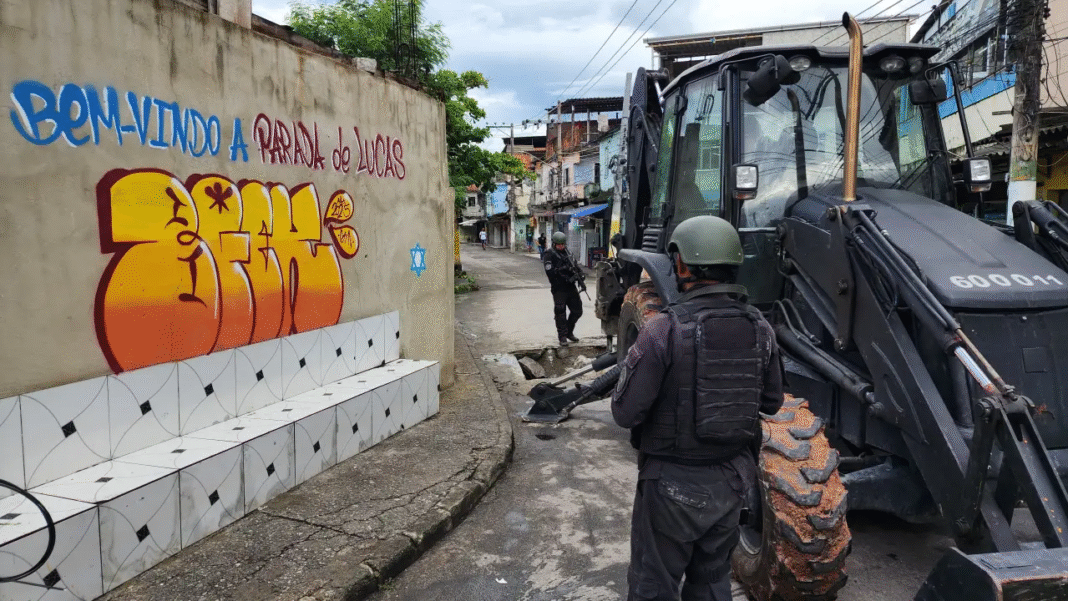SUMMARY
Between January and May 2025, Rio de Janeiro faced rising hybrid crimes, cable theft, and bus hijackings that disrupted transport and public services. Police lethality increased by 34.4%, and security agent deaths more than doubled, leading to new Supreme Federal Court (STF) accountability measures. While some crimes declined, digital fraud and cellphone theft grew. The current scenario demands stronger risk management and coordination from businesses operating in the region, including continuous monitoring of local crime trends and implementation of updated safety protocols for employees.
This Content Is Only For Subscribers
To unlock this content, subscribe to INTERLIRA Reports.
Introduction
The public security landscape in Rio de Janeiro during the first five months of 2025 has been marked by persistent challenges, territorial conflicts, and shifts in criminal strategies. These developments have unfolded in a context of political tension and social instability, with the state government facing criticism over its security policies and the aftermath of national debates on public safety reform.
While some crime indicators—such as street robbery and vehicle theft—have shown moderate declines, others have increased, reflecting the complexity of ensuring security in one of Brazil’s most violent metropolitan areas. According to data from the Rio de Janeiro Public Security Institute (ISP-RJ), cellphone theft (+18.5%), vehicle robbery (+29.5%), and general theft (+11.5%) rose notably compared to the same period in 2024. Meanwhile, digital fraud (+3.2%), cellphone robbery (+2.78%), and scams targeting residents and tourists have become more sophisticated and widespread. Armed confrontations between rival criminal factions continue to affect several regions of the city. Additional concerns include the hijacking of buses used as barricades and the theft of copper cables tied to organized crime.

A particularly concerning trend is the increase in police violence and the deaths of security agents. Fatalities caused by police interventions rose by 34.4%, while the number of officers killed more than doubled. In response, Brazil’s Supreme Federal Court approved new guidelines under the “Arguição de Descumprimento de Preceito Fundamental (ADPF) das Favelas”, introducing stricter accountability measures and expanding the role of the Federal Police.
Shootings and Criminal Factions Disputes
Between January and May 2025, the metropolitan region of Rio de Janeiro recorded at least 1,011 shootings or firearm discharges, according to the Fogo Cruzado Institute. Of these, 441 occurred during police operations. In total, 679 people were shot—338 killed and 341 injured. Compared to the same period in 2024, when we saw 1,131 shootings (366 during police actions) and 598 victims (317 dead, 281 injured), 2025 shows an 11% overall decline in shootings.
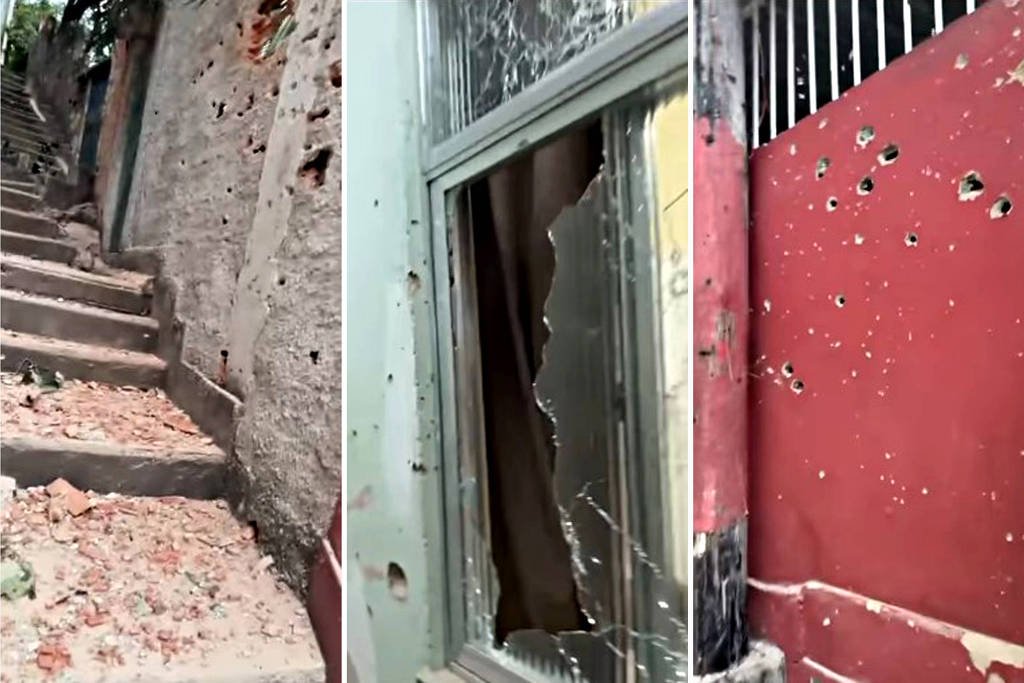
Territorial disputes between criminal factions have intensified across several regions. In Morro dos Macacos in Vila Isabel, in the North Zone, the Third Pure Command (TCP) and Red Command (CV) remain locked in ongoing clashes, with 130 shootouts recorded in the area between January 2024 and May 2025. In the western zone, especially Gardênia Azul and Rio das Pedras, CV has advanced into former militia strongholds, a movement accelerated by the death of militia leader Wellington da Silva Braga, known as “Ecko”, in June 2021.
In the northern zone too, drug traffickers from Serrinha, in Madureira, linked to the TCP, are fighting for control of Juramento, currently under the control of the CV, fueling ongoing clashes and reinforcing the city’s volatile security environment.
Police Violence and Officer Deaths
The number of public security agents killed in Rio more than doubled in early 2025, compared to the same period in 2024, according to ISP-RJ. Between January and April, 37 agents—including police officers, firefighters, and prison staff—were killed, up from 18 in the previous year. These deaths account for 52% of all such killings in Brazil during that period, the first time Rio has surpassed half of the national total since records began in 2015.
On 19 May, a special forces officer from the Civil Police’s Coordenadoria de Recursos Especiais (CORE) unit was shot dead during an operation in Cidade de Deus, West Zone. The operation, in partnership with the State Environmental Institute (Inea), targeted illegal production of contaminated ice bags sold on Barra and Recreio beaches.
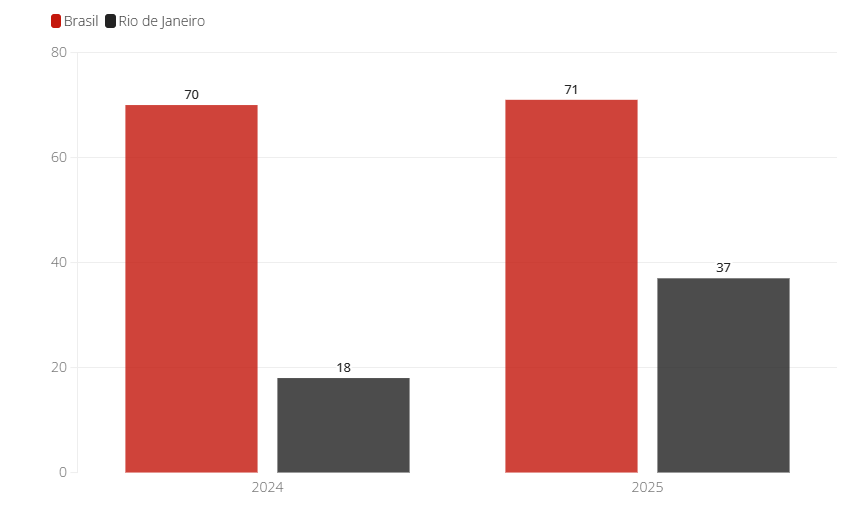
At the same time, the number of deaths caused by police intervention in Rio also rose sharply. According to the Ministry of Justice, there were 285 such deaths from January to April, 34.4% increase from 212 in early 2024. Nationally, police killings fell by 0.3% during the same timeframe.
One controversial case occurred on 7 June, when a Batalhão de Operações Policiais Especiais (BOPE) operation during a public party in the Santo Amaro community, in Catete neighborhood, South Zone, led to the death of Herus Guimarães Mendes, a 24-year-old office assistant. Five others were injured during the raid.
Scams
According to data from the Rio de Janeiro Public Security Institute (ISP-RJ), scam cases—both online and in-person—continued to rise in Rio de Janeiro during the first five months of 2025. From January to May, 62,401 fraud incidents were recorded in the state, marking a 3.2% increase from the 60,465 cases in the same period in 2024.
In April, Daniel da Silva Cassiano was arrested in Rio das Pedras during Operation Romance Scam, a joint action by the Civil Police of Rio de Janeiro and Pará. He allegedly took part in a scheme where a Pará victim sent R$500,000 to someone she thought was a foreign romantic partner.
In June, five individuals were arrested for scamming foreign tourists on Ipanema beach using tampered card machines that overcharged victims up to R$5,000. Reports indicate that at least 20 street vendors were involved.
Digital scams have also become more sophisticated, including fake investment platforms, cloned Pix keys, phishing through messaging apps, and impersonation using AI-generated voices and images. These scams are often tied to cellphone robbery and theft, which rose 18.5% and 2.78%, respectively. Criminals use stolen phones to access banking apps and personal data for fraud.
There is a noticeable shift toward hybrid schemes that combine physical and digital tactics. While traditional crimes have become riskier due to better surveillance and policing, digital fraud offers high reward with low risk, allowing criminals to operate remotely with fewer consequences.
Copper Cable Theft
In 2025, the Civil Police of Rio de Janeiro launched an operation to dismantle a criminal organization involved in large-scale copper and fiber optic cable theft. The group, with at least 22 members, is accused of money laundering and ties to the Red Command (CV), Brazil’s second-largest criminal faction. Authorities targeted R$200 million in assets and seized 200 tons of copper at a single site in Campo Grande, West Zone.
Investigators found that thefts occurred early in the morning, with armed scouts—often linked to drug trafficking—escorting trucks that extracted underground cables. The group recruited skilled technicians, many of whom had previously worked for legitimate companies, to carry out the operations. Stolen copper was processed and sold to scrapyards and metal firms in Rio and São Paulo.
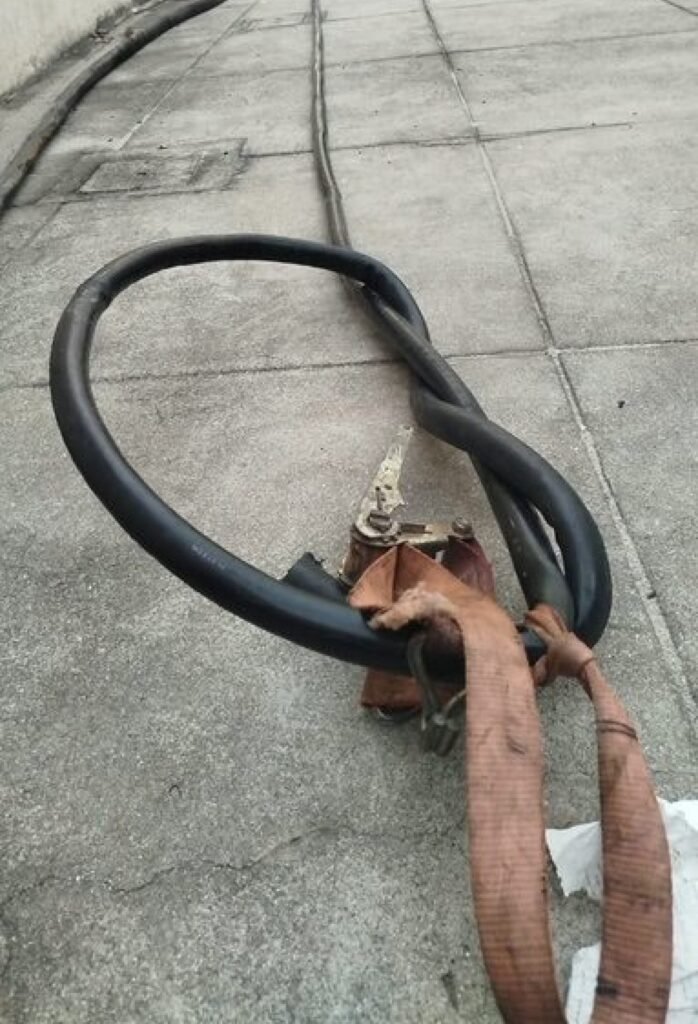
One of the main victims, energy utility Light, reported the theft of 135 kilometers of wiring between January 2024 and April 2025, resulting in power outages and system failures. In the first four months of 2025 alone, 58,000 cable meters were stolen, particularly in the South Zone, Downtown, and Barra da Tijuca.
The case highlights how major criminal groups are diversifying income sources, increasingly engaging in cable theft, extortion, and control of services to reduce reliance on drug trafficking and ensure steady revenue.
Shootings Near Expressways
In June 2025, a major operation by the Rio de Janeiro Civil Police targeted members of the Third Pure Command (TCP) in the Complexo de Israel, a cluster of communities in the city’s northern zone. After seven months of investigation, the operation led to 20 arrests and the seizure of weapons and narcotics. Led by trafficker Malaquias Santa Rosa, known as “Peixão,” the TCP operates in areas such as Vigário Geral, Cidade Alta, and Parada de Lucas. The group uses barricades, drones, and bunkers, enforces curfews, monitors police, and trains units to shoot at helicopters.
The police action caused significant disruption. Avenida Brasil and Linha Vermelha were closed for nearly two hours, and the city’s alert level was raised due to the risk of high-impact incidents. In the north zone, Bus Rapid Transit (BRT) services were suspended along the Transbrasil corridor, and SuperVia train services on the Saracuruna line were interrupted between Central do Brasil and Penha, and between Duque de Caxias and Gramacho.
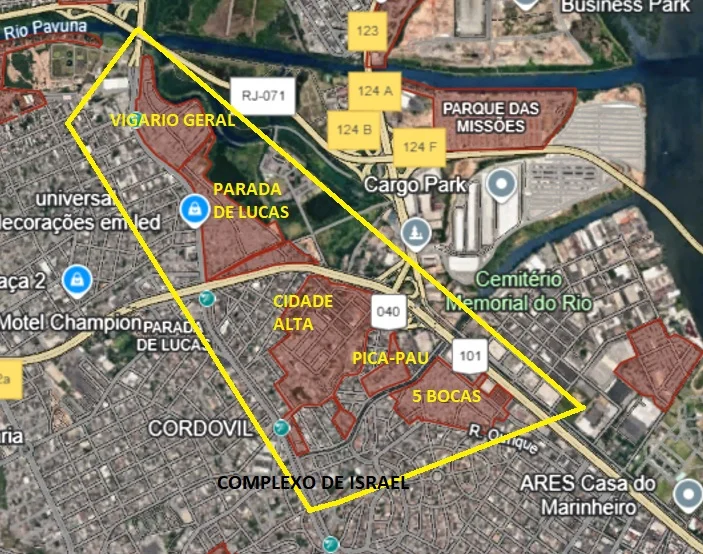
According to data from the City Hall’s Operations and Resilience Center (COR), in 2025, Avenida Brasil has already been closed 11 times, and Linha Vermelha four times, due to gunfire exchanges. BRT services were suspended seven times, and Saracuruna train services were halted on seven occasions, approaching the levels recorded in 2024 and indicating a continued pattern of urban disruption tied to armed conflict.
Buses Used as Barricades
Buses have been hijacked to serve as barricades during police operations or clashes between factions. According to Rio Ônibus, the city’s bus operator union, 59 buses have been taken over by factions and used for such purposes this year.
On 10 May, a bus from line 920 (Pavuna – Bonsucesso) was seized and used as a barricade in Costa Barros, in Rio de Janeiro’s North Zone. According to the Military Police, armed criminals hijacked the vehicle and set trash containers on fire to block police access to the area. The incident occurred during an operation in the Chapadão and Pedreira complexes, where clashes between rival drug factions – Third Pure Command (TCP) and Red Command (CV) – have become increasingly frequent.
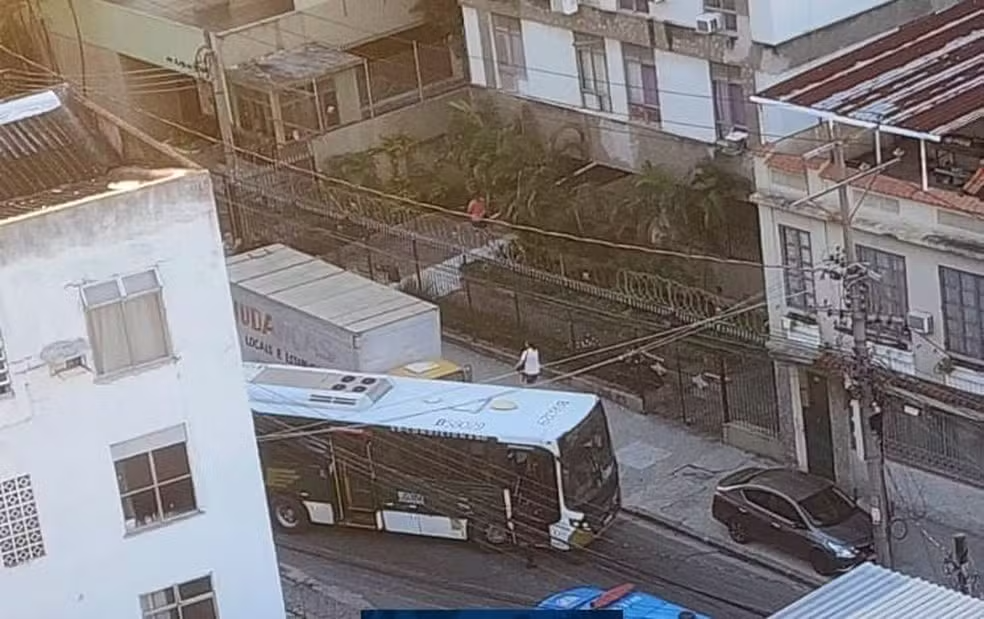
The incident came just one day after Governor Cláudio Castro signed a law creating the Ônibus Seguro (Safe Bus) program. The initiative aims to enhance the security of public buses in the metropolitan area, using intelligence-based policing and violence data to guide operations. The program will involve cooperation between state security agencies, local governments, and Fetranspor, the state passenger transport federation.
New STF Ruling
In April, Brazil’s Supreme Federal Court (STF) concluded the trial of ADPF 635—known as the “ADPF das Favelas”—by approving a broad set of measures aimed at reducing police lethality in Rio de Janeiro’s favelas. The ruling mandates institutional changes to police operations.
Key provisions include the mandatory use of body cameras by officers and real-time geolocation systems in all public security vehicles, with audio and video recording to improve transparency and accountability. The Court also required mandatory autopsies and forensic reports to be completed within ten days in all cases of deaths caused by police action.
The state must also present a territorial reoccupation plan to restore public governance in areas controlled by drug traffickers or militias. The ruling eases previous restrictions on the use of helicopters in police operations, allowing their deployment under stricter controls.
Conclusion
The public security landscape in Rio de Janeiro during the first five months of 2025 remained volatile and deeply influenced by structural challenges. While certain indicators such as street robbery and vehicle theft showed moderate decline, hybrid crimes involving cellphone theft and digital fraud have become more common and sophisticated. Organized criminal groups expanded their operations beyond drug trafficking, increasingly targeting critical infrastructure through copper cable theft, extortion, and transport disruption.
Armed confrontations between rival factions, especially in the North and West Zones, continued to destabilize communities and interrupt essential services. The repeated hijacking of buses and suspension of train and BRT lines underscore the growing impact of violence on urban mobility. Meanwhile, police lethality rose by 34.4%, and deaths of security agents more than doubled, trends that prompted the Supreme Federal Court’s ruling on ADPF 635, which imposes new accountability and oversight measures.
This environment demands a proactive response from companies operating in the region. Risk management strategies should include continuous monitoring of local crime trends, updated safety protocols for employees, and coordination with law enforcement and local authorities. By integrating public security considerations into operational planning, businesses can better protect assets, ensure continuity, and contribute to safer urban environments.



